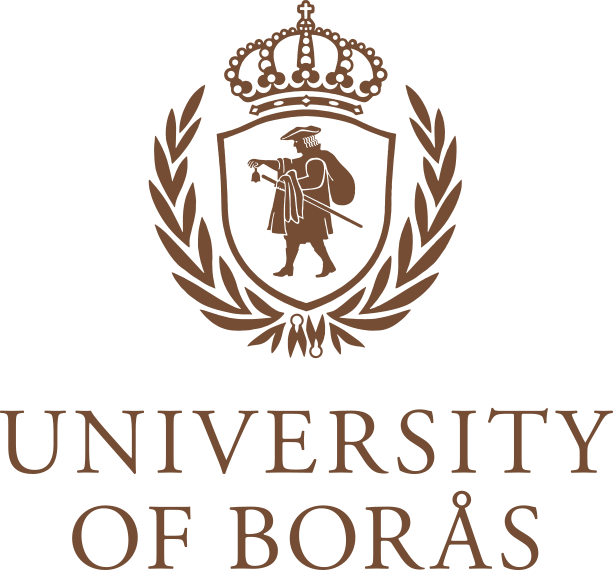Public lecture about the journey towards smart textile systems for home rehabilitation
2025-06-24

Public lecture: Textile-Based Electrodes for sEMG: Towards Smart Textile Systems for Home Rehabilitation
Date: 27 Augusti
Time: 14:05–15:00
Location: Vestindien B, Textile Fashion Center
This is one of two lectures in this session; the other one will be given at 13:00–14:00 by Junchun Yu, Associate Professor of Textile Technology on the topic of Resource Efficiency and Recycling in Textiles: Exploring Pathways to More Sustainable Materials and Processes.
What do you find most interesting in your research area right now, and looking a few years ahead?
“Right now, I’m most interested in how we can move smart textiles from the lab into people’s everyday lives. It’s no longer just about technical performance, it’s about making smart textile (-based) systems that are usable, reliable, and meaningful in real life contexts. One quote I often return to is: “Technology is the answer, but what was the question?” by Cedric Price, an English architect and influential teacher and writer. It reminds me to always start from real needs.”
Textiles are the technology of the everyday.
“Looking ahead, I hope to continue working with smart textiles solutions for home rehabilitation and beyond (to other application areas). On the other hand, I also wish to deepen the research in material science, the fundamental, for technical breakthroughs, to improve the system’s reliability, usability and again, in connection with real life contexts. “
How did your interest in this research area begin?
“It started quite naturally. I’ve always been drawn to the tactile and human side of technology, and textiles are a perfect example of that. They’re close to the body, part of daily life, but also technically fascinating. I once came across the phrase “Textiles are the technology of the everyday,” and that really stayed with me. The idea that something so familiar could become an active interface, sensing, actuating, communicating... is what led me towards mart textiles and their potential in healthcare.”
What is your lecture in August about?
“The lecture focuses on textile-based electrodes, how we design them, how they work, and how they can be part of larger systems that support rehabilitation (as one example). I will talk about a research framework that follows the journey from materials to real-world use and share examples from my own projects in stroke rehabilitation and phantom limb pain. It’s also about reflecting on what kind of research is needed to make technology useful in healthcare, again, not just functional, but meaningful.”
Who is the lecture aimed at?
“It’s mainly for colleagues and doctoral students in textile technology and related fields, but I think anyone interested in healthcare innovation, wearable systems, or user-centred design will find something to connect with. I hope it can also speak to people who are curious about how applied research in engineering and materials can shape future healthcare.”
Why is this research important for society?
“Because we need more accessible and personalised ways to support rehabilitation, especially as care increasingly moves outside hospital settings. Take stroke rehabilitation as an example. Strokes affect over 80 million people and their families worldwide. In Sweden alone, around 25,000 people suffer a stroke each year. Many of them require long-term support after discharge, but regular access to rehabilitation services is limited. If we can offer textile-based systems that provide feedback or stimulation at home, we can extend rehabilitation beyond the clinic. in a way that is both scalable and comfortable for users. This makes textile-based solutions especially relevant for sustainable, home-based care. “
“I often find that the most interesting insights come through collaboration, especially with healthcare professionals and patients. Their perspectives challenge our assumptions and help make the technology more relevant. For me, co-design is not just a method, but a way to stay grounded in what really matters in people’s lives. It also makes the research process more dynamic and rewarding.”
What does the Associate Professor qualification mean to you?
“It means a lot. It’s a recognition of a research journey that’s been very hands-on, but also very reflective. It also feels like a moment to pause and look ahead, to think about what kind of researcher I want to be, and how I can contribute not just with results, but with direction and impact. It encourages me to continue building bridges between disciplines, and to support others who are doing the same.”
Read more
About the research in Polymeric E-textiles
Abstract of the lecture
Textile-Based Electrodes for sEMG: Towards Smart Textile Systems for Home Rehabilitation
This lecture presents research in textile technology with a focus on textile-based electrodes for surface electromyography (sEMG). Starting from material and structural design, the work investigates how material selection, fabric architecture, and surface properties influence electrode performance in physiological signal acquisition. These fundamental studies form the foundation for integrating textile electrodes into smart textile systems for health and rehabilitation. A four-step framework, materials and structure design, functional component design, system integration, and feasibility study, is used to illustrate how textile research can evolve from early-stage investigations to real-world applications. Research examples include textile electrodes for stroke rehabilitation and phantom limb pain treatment. The lecture highlights the importance of multidisciplinary collaboration in advancing smart textiles from laboratory prototypes to user-oriented healthcare technologies. It offers a model for moving beyond proof-of-concept towards practical, user-centered research with societal relevance. The aim is to show how textile technology contributes to the future of digital health and rehabilitation through rigorous, application-oriented research.
Solveig Klug
Suss Wilén

